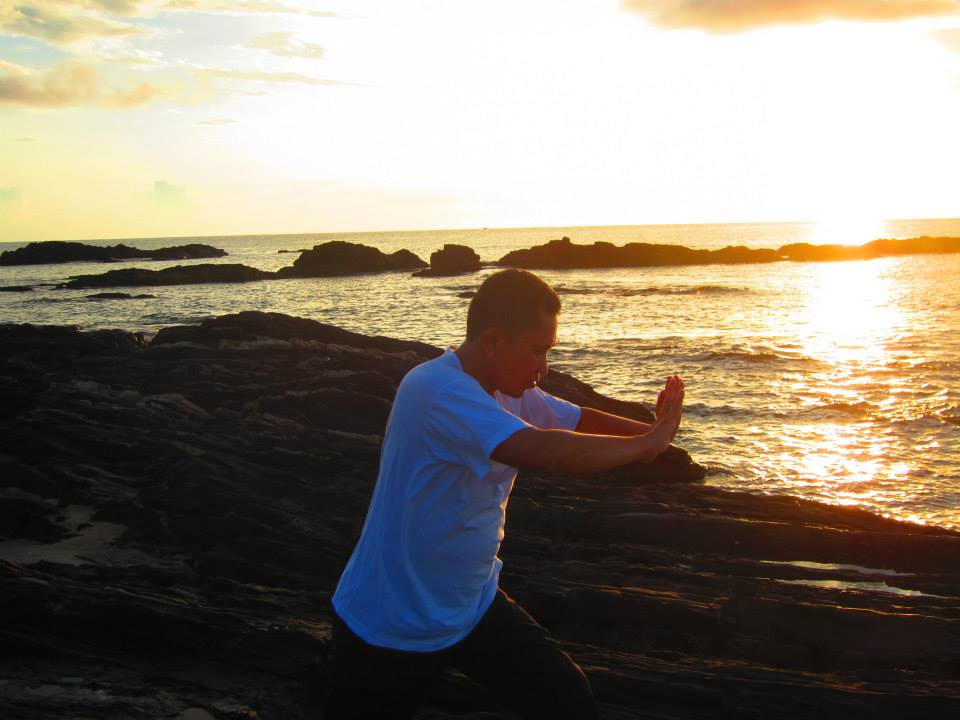Proper breathing practices can improve physical health in various ways, including reducing stress, enhancing lung function, and increasing endurance. Some recommended breathing practices include diaphragmatic (abdominal) breathing, nasal breathing, and deep breathing with long exhales.
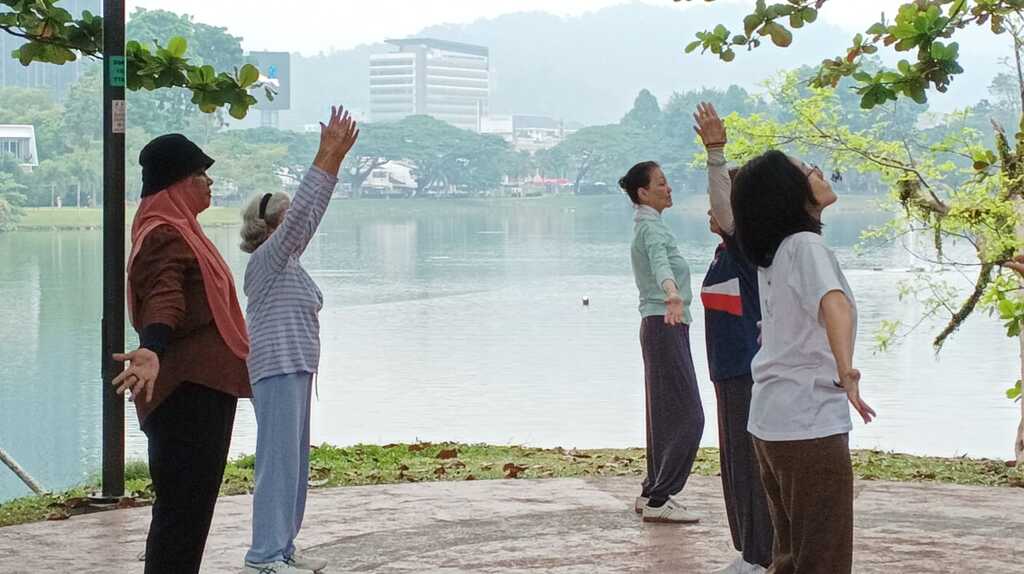
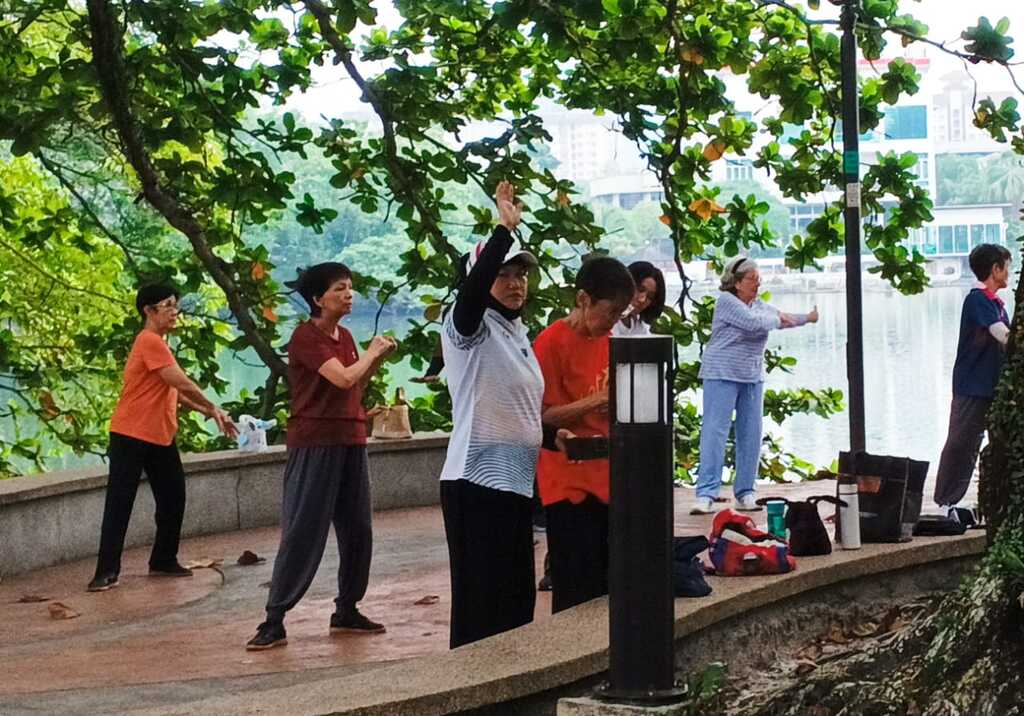
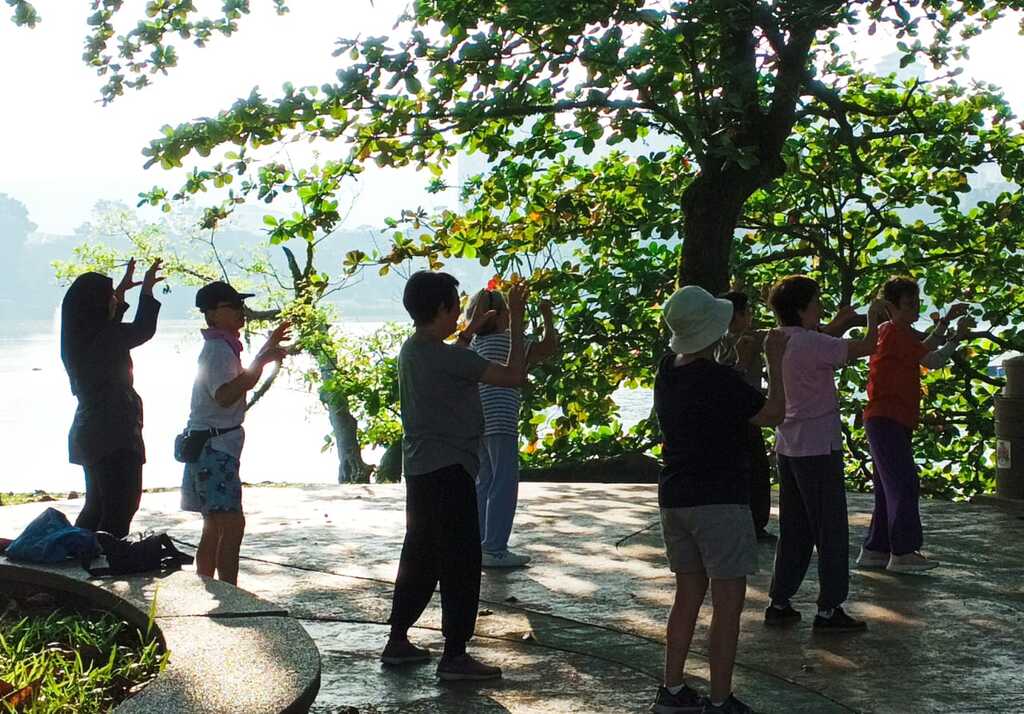
Breathing practices for physical health have been practiced in various cultures and traditions, including yoga, qigong, Sufism, and modern health training. Below are several basic and effective breathing practices to improve physical well-being:
✅Diaphragmatic Breathing (Abdominal Breathing)
- Benefits: Reduces stress, improves oxygenation, enhances lung and heart function.
- How to do it:
- Sit or lie down comfortably.
- Place one hand on the chest and one on the stomach.
- Inhale slowly through the nose (feel the stomach rise).
- Exhale slowly through the mouth (feel the stomach fall).
- Do this for 5–10 minutes daily.
✅ 4-7-8 Breathing (Relaxation Technique)
- Benefits: Lowers blood pressure, helps with sleep, calms the nervous system.
- How to do it:
- Sit calmly with your back straight.
- Inhale through the nose for 4 seconds.
- Hold your breath for 7 seconds.
- Exhale slowly through the mouth for 8 seconds.
- Repeat 4 or more times.
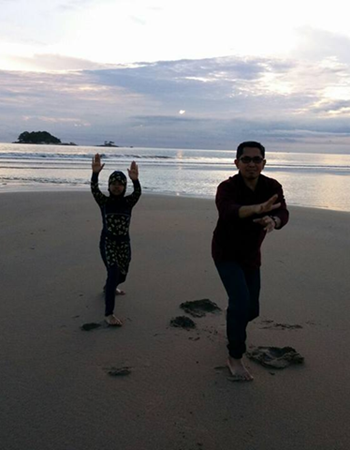

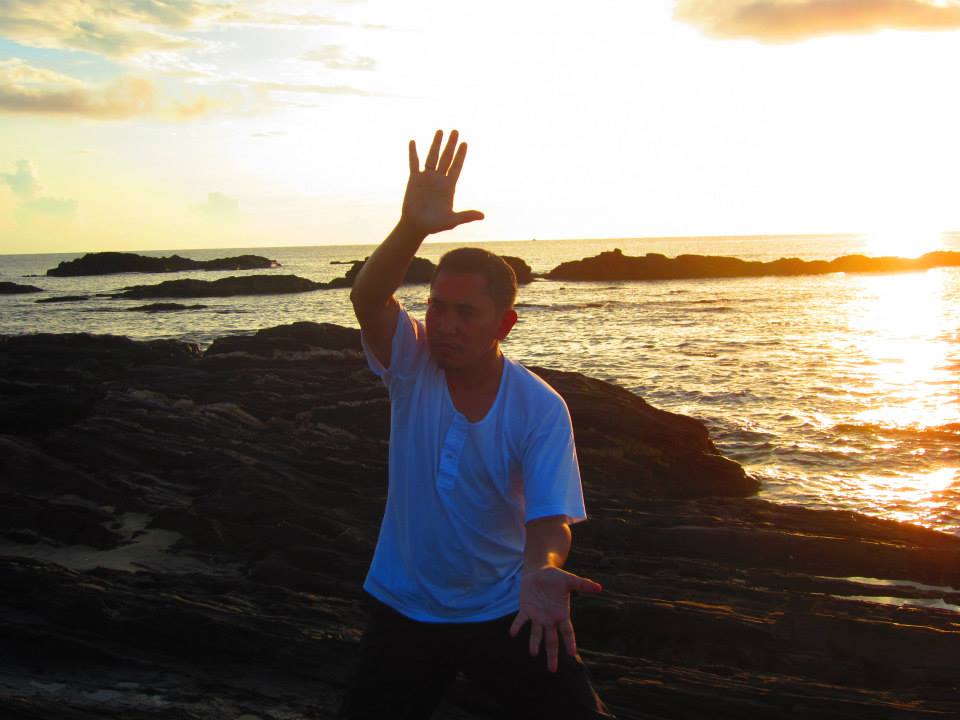
✅ Box Breathing – Used by military & athletes
- Benefits: Improves focus, controls stress, supports the immune system.
- How to do it:
- Inhale for 4 seconds.
- Hold for 4 seconds.
- Exhale for 4 seconds.
- Hold again for 4 seconds.
- Repeat for 5–10 minutes.
✅ Rhythmic Breathing with Movement (Qigong/Silat/Yoga Style)
- Benefits: Increases energy, flexibility, and body coordination.
- Simple Example:
- Stand straight with arms at your sides.
- Inhale while slowly raising arms upward (as if lifting energy).
- Exhale while lowering arms.
- Repeat 10 times while focusing on breath flow.
✅ Alternate Nostril Breathing (Nadi Shodhana – from Yoga)
- Benefits: Balances right & left brain, reduces mental & physical tension.
- How to do it:
- Use your right thumb to close the right nostril, inhale through the left.
- Close the left nostril with the ring finger, exhale through the right.
- Inhale through the right, exhale through the left.
- Repeat for 5–10 minutes.
✅ General Benefits of Daily Breathing Practices:Lowers blood pressure
- Increases blood oxygen levels
- Strengthens lungs
- Boosts immune system
- Aids in detoxification
- Reduces muscle tension and migraines
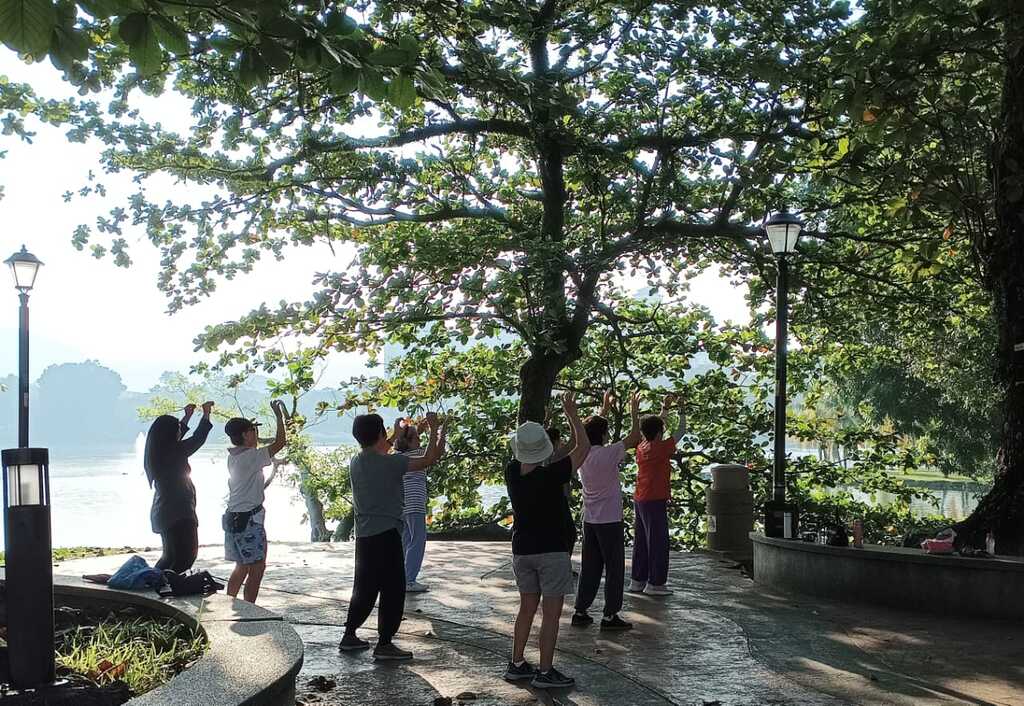
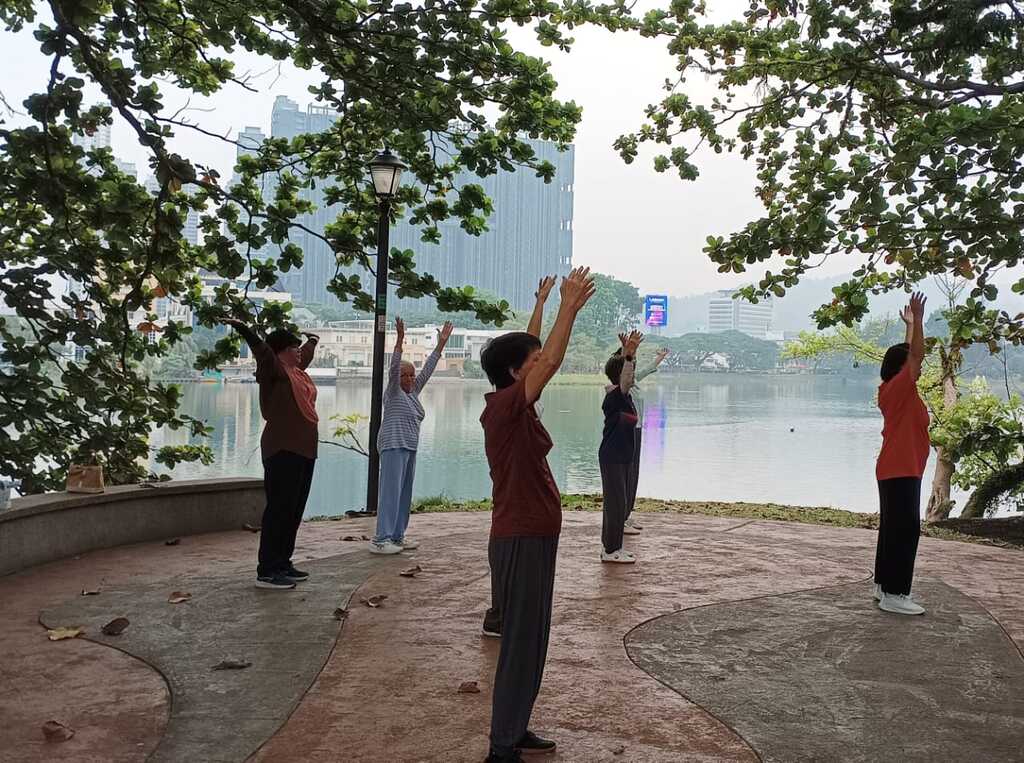
These breathing practices can help:
- 🌀 Reduce Stress: According to studies at Pantai Hospitals, Malaysia, slow and deep breathing stimulates the parasympathetic nervous system, which calms the body.
- 🌀 Improve Lung Function: Proper breathing, especially nasal breathing, ensures the air entering the lungs is clean, moist, and warm.
- 🌀 Boost Endurance: Efficient breathing supplies more oxygen to the muscles, improving physical performance and stamina.
- 🌀 Control Blood Pressure: Proper techniques like diaphragmatic breathing can help regulate blood pressure.
- 🌀 Increase Awareness: Focusing on breath enhances awareness of the body and mind.
Breathing Practices in Global Martial Arts
Breathing practice is one of the most important components of martial arts worldwide. It not only improves physical performance and endurance but also deepens spiritual, mental, and self-control aspects.
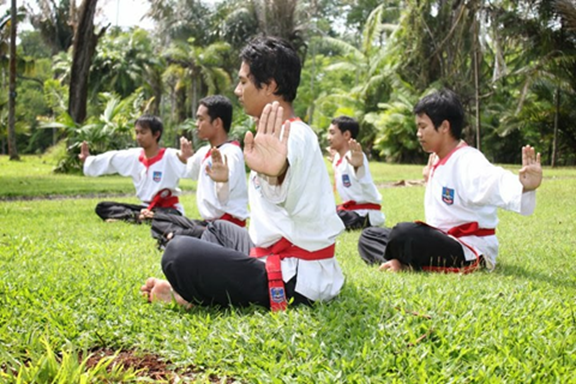
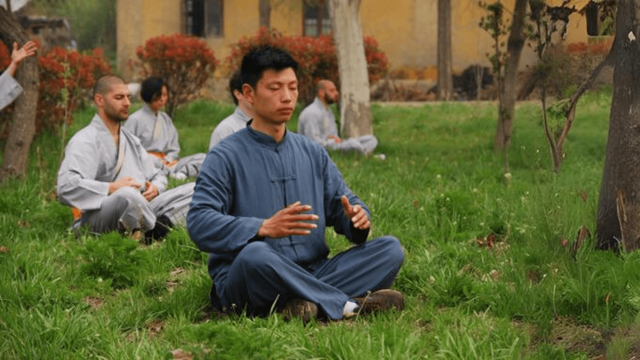
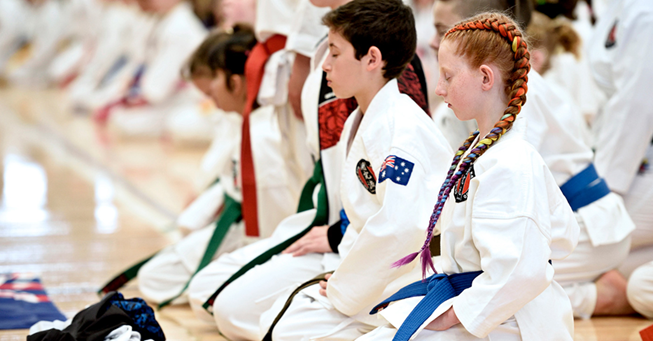
Here is a summary of breathing practices in various global martial arts traditions:
- 🇨🇳 China – Qigong & Tai Chi (气功 & 太极): Chinese martial arts combining body movements, breathing, and meditation to promote health and wellness.
- Practice Name: Qigong, Neigong, and Tai Chi deep breathing
- Purpose: Circulate internal energy (Qi/Chi), strengthen internal organs, control emotion
- Technique: Slow, deep nasal breathing (stomach rising/falling)
- Coordinated with slow movement and focus
- Example: "Dan Tian" breathing – focusing below the navel
- 🇯🇵 Japan – Aikido, Karate & Kendo
- Practice Name: Kokyu-ho (harmonized breathing)
- Purpose: Enhance focus, inner strength, and balance
- Technique: Deep nasal inhalation, long exhale through mouth
- Used during throwing techniques and meditation (Zazen)
- Example: "Ibuki breathing" in Karate – strong, deep breath before attack
- 🇮🇳 India – Kalaripayattu & YogaPractice Name: Pranayama
- Purpose: Control life energy (prana), improve physical and spiritual health
- Technique: Various forms: Nadi Shodhana (alternate nostril breathing), Bhastrika (breath of fire), etc.
- Connection to martial arts: Kalaripayattu uses pranayama for strength and focus before training or combat
- 🇰🇷 Korea – Taekwondo & Hapkido
- Practice Name: Ki breathing / Danjeon Hoheup
- Purpose: Activate Ki energy, manage stress, stabilize movements
- Technique: Abdominal breathing, sometimes combined with vocal sound
- Used before/after kicks or strikes
- 🇲🇾🇮🇩 Malaysia & Indonesia – Silat
- Practice Name: Nafas Silat, Deep Breathing
- Purpose: For inner strength, energy control, spiritual protection
- Technique: Deep nasal breathing, hold, and release with control
- Sometimes combined with chanting (zikir) or prayer
- Example: Nafas Gerak Batin, Nafas Harimau, Nafas 7 or 9
- 🇹🇭 Thailand – Muay Thai
- Practice Name: No formal system like Qigong, but has simple breathing techniques
- Purpose: For explosive energy and stamina
- Technique: Short, fast breaths during attacks and deep breaths during rest between rounds
- 🇷🇺 Russia – Systema
- Practice Name: Systema Breathing
- Purpose: Overcome stress, endure pain, spontaneous strength
- Technique: Breathing under high-pressure conditions (e.g., during hits)
- Continuous breath to calm the nervous system
- 🇧🇷 Brazil – Capoeira
- Practice Name: Not formalized, but breathing during movement is essential
- Purpose: Coordination between movement and rhythm of music
- Technique: Deep breathing during Ginga (basic step), controlling breath during acrobatics
🧘 Martial Arts Breathing Practice Names & Primary Goals
- Qigong (China) Qigong / Neigong: Strengthen internal energy & health
- Karate (Japan) Kokyu-ho / Ibuki: Increase power, energy, and control
- Silat (Malay) Nafas Silat: Strengthen inner breath & spiritual defense
- Yoga (India): Pranayama Control energy & mind
- Taekwondo (Korea): Danjeon Hoheup Stamina & balance
- Systema (Russia) : Systema Breathing Endurance under pressure
Breathing practice in martial arts is a crucial aspect that helps practitioners achieve physical and mental balance, enhance strength, stamina, and calmness. Proper breathing can reduce stress, improve focus, and regulate emotions in challenging situations.
Types of Breathing Practices in Martial Arts
- Diaphragmatic Breathing: This technique involves deep breathing using the diaphragm, helping to increase lung capacity and promote better oxygen flow throughout the body.
- Reverse Breathing: In some martial arts styles, reverse breathing is used, where inhalation occurs into the back of the thoracic cavity instead of the diaphragm.
- Controlled Breathing: This technique involves regulating the breath to calm the mind, reduce stress, and enhance focus.
- 4-7-8 Breathing: This technique involves inhaling for 4 seconds, holding the breath for 7 seconds, and exhaling for 8 seconds, helping reduce anxiety and increase relaxation.
- Breath Meditation: Meditative practice focusing on the breath can increase self-awareness, calmness, and focus, all vital in martial arts.
Benefits of Breathing Practice
- Emotional Balance: Controlled breathing helps calm the mind and regulate emotions in stressful situations.
- Improved Stamina: Proper breathing enhances lung capacity and oxygen flow, increasing physical endurance.
- Increased Focus: Controlled breathing sharpens focus and concentration, essential for executing martial arts techniques accurately.
- Stress Reduction: Breathing practices help reduce stress and anxiety, giving practitioners mental calmness.
- Improved Posture and Health: Proper breathing can enhance body posture and overall physical health.
Can Breathing Practice in Martial Arts Lead to Extraordinary Abilities?
The concept of internal energy, such as qi (or "chi") in Chinese traditions and chakra in Indian traditions, is often associated with the belief that subtle energy exists within and around the human body. In the context of breathing and martial arts practices, it is believed that through specific training, one can access, control, and distribute this energy to achieve extraordinary performance. Here are some key aspects explaining how this process is believed to occur:
Philosophical Foundations and Energy Concepts
- Qi (Chi): In Chinese tradition, qi refers to the life energy that flows through the body. Practices like Qigong, Tai Chi, and certain breathing techniques are designed to open energy channels (meridians) and allow smooth qi flow. Skilled practitioners believe that by coordinating breath, movement, and meditation, they can manipulate qi to enhance physical strength, endurance, and mental balance.
- Chakra: In Indian tradition, chakras are energy centers located along the spine and head. Through yoga and meditation, one aims to cleanse and activate these chakras. Chakra activation is believed to increase vitality, focus, and the ability to control internal energy more effectively.
Breathing Practices and Energy Activation
- Breathing Techniques (Pranayama and Qigong): Practices such as pranayama in yoga and breathing techniques in Qigong encourage breath awareness, help regulate the breathing rate, and align energy flow. This is typically done through:
- Deep breathing initiation: This involves slow, deep breathing to calm the nervous system, oxygenate cells, and open energy "channels."
- Focus and visualization: Practitioners are often encouraged to imagine energy moving along the body’s core, flowing through chakras or meridians. Visualization is believed to stimulate certain energy points in the body.
- Mindfulness: Full awareness of breath movement and body sensations helps achieve deep meditative states where body and mind act in harmony.
Extraordinary Abilities in Martial Art
- Invisibility: In some traditions, this may refer to distraction techniques or the ability to move so swiftly that one appears to "vanish" from the opponent’s view. This usually involves mastery in movement, awareness of the opponent’s rhythm, and illusion rather than actual invisibility.
- Physical Strength and Endurance: Martial artists who master breathing techniques are believed to enhance their internal strength. By optimizing qi or energy flow through the body, they claim to increase abilities such as the power of strikes or kicks. While this is rarely explained scientifically, subjective experiences and traditional beliefs support this notion.
- Wind Techniques and Movement Skills: Certain martial arts styles like Tai Chi and Wing Chun emphasize the use of internal energy to redirect attacks or maintain balance using “soft energy.” Techniques involving energy flow or “wind-like” movement are said to allow smooth and effective power release.
- Flying and Invisibility: Terms like "flying" or "vanishing" in martial arts literature are more symbolic or metaphorical than literal. In the context of breathing and meditation, states of awareness where the body feels light or floating may be experienced as transcendental sensations. These may reflect a deep meditative state where physical limits feel diminished.
- Literal levitation: There is no strong scientific evidence that breathing practices can cause physical flight. However, sensations of lightness, mental clarity, and a “floating” feeling are common subjective experiences.
Scientific and Psychological Perspectives
- Psycho-Physical State: Deep breathing and meditation techniques have been proven to positively impact the autonomic nervous system, reduce stress, and improve focus and emotional regulation. A stable mental state enhances physical performance and agility in demanding situations.
- Focus and Concentration: Breathing and meditation practices enhance the ability to concentratjustify-texte, a critical element in martial arts.
- Body-Mind Coordination: By integrating breathing into movement, practitioners often report better motor coordination and body awareness, improving technical execution.
- Neurophysiological Effects: Modern studies show that deep breathing can lower blood pressure and activate the parasympathetic nervous system, promoting relaxation and mental clarity. Although the concepts of “qi” or “chakras” are difficult to validate scientifically, the physiological benefits of such practices are well documented.
While descriptions such as “extraordinary strength,” “wind techniques,” “flying,” and “disappearing” are more symbolic and literary in martial arts history, deep breathing practices provide real, measurable benefits to mental and physical well-being. Through continuous practice, martial artists can achieve inner balance, focus, and strength that optimize their performance. In short, while superhuman abilities portrayed in myths or films may not be entirely literal, the positive impact of breathwork on the body and mind is a fact recognized by many traditions and some areas of modern scientific research.
Breathing Practice in Religious Mystical Traditions
Breathing is a central element in many religious mystical traditions across cultures and faiths. The breath is viewed not only as a physiological function but also as a bridge between the body, soul, and spiritual dimensions. Below is a summary of breathing practices in various mystical religious traditions:
Here's the English translation of your full text on Mystical Breathing Practices and the Question of Qi, Chakra, and Jinn:
- 🕉 Hinduism (Yoga and Tantra)
- Pranayama: Techniques of breath control to manage inner energy (prana).
- Examples:
- Nadi Shodhana (alternate nostril breathing)
- Kapalabhati (fast, forceful breaths for detoxification)
- Purpose: To cleanse energy channels (nadi), open chakras, and unite consciousness with Brahman.
- ☸ Buddhism (Zen, Vajrayana, Theravāda)
- Anapanasati: Mindfulness of breathing in and out.
- Tummo (Vajrayana): Breath and visualization technique to activate inner fire and kundalini energy.
- Purpose: To calm the mind, realize the impermanence (anicca), and attain enlightenment (nirvana).
- ☪ Sufism (Islamic Mysticism)
- Breath Zikr (Remembrance): Chanting “Allah,” “Hu,” or divine names (Asmaul Husna) in sync with breath rhythm.
- Muraqabah al-Nafs: Breath awareness as a means to be present with God.
- Purpose: To purify the heart (qalb), achieve fanā’ (self-annihilation in God), and reach spiritual states (maqāmāt).
- ✡ Kabbalah (Jewish Mysticism)
- Yichudim with breath: Focusing on divine name combinations during breathing.
- Shema with breath: Reciting sacred verses while controlling breath as a meditation.
- Purpose: Union with Ein Sof (The Infinite), opening spiritual awareness.
- ✝ Christian Mysticism (Hesychasm & Contemplative Prayer)
- Jesus Prayer with Breath (Hesychasm): Repetition of “Lord Jesus Christ, have mercy on me” in breath rhythm.
- Centering Prayer: Focus on a holy word with calm breathing.
- Purpose: Inner stillness (hesychia), union with the love of Christ.
- 🐉 Taoism
- Qigong and Neigong: Breath training to move qi through the body’s meridians.
- Purpose: To improve health, longevity, and spiritual attainment through Yin-Yang harmony.
- 🌍 Ancient Egyptian Beliefs & Hermetic Practices
- Breath is considered as “ka” (life energy).
- In Hermeticism (a Gnostic-pagan system), breath is used in divine visualizations, to absorb cosmic energy.
- Purpose: Union with celestial beings (gods), and return to The One or divine source.

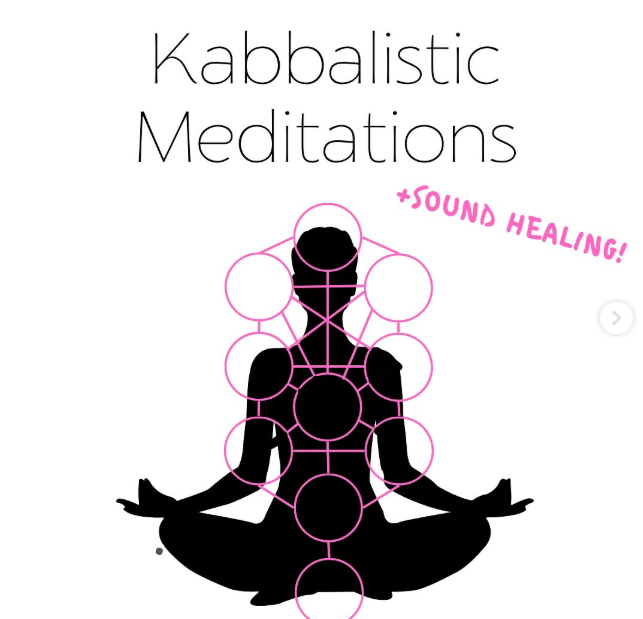
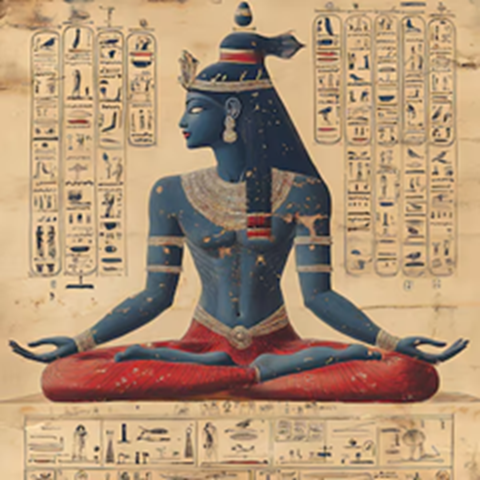
🔥 Universal Purposes of Mystical Breathing Practices
- Purification of the soul (tazkiyah): Breath is used to bring self-awareness and inner cleansing.
- Divine Union (wahdat): Breath as a pathway to unite with God or the highest reality.
- Opening chakras/nadis/lataif: Breath activates subtle spiritual energy systems.
- Awakening and Presence: Deep breathing fosters divine presence and full awareness.
Is it possible that Qi or Chakras are actually Jinn?
According to many Islamic perspectives, jinn can influence or flow through the human body. Interpretations vary across schools of thought. A hadith from the Prophet Muhammad ﷺ states:
“Verily, Satan circulates in the body of the son of Adam as blood circulates.”
—Narrated by Bukhari and Muslim
This indicates that jinn (especially shayṭān) can subtly and invisibly move within the human body. Scholars from Ahl al-Sunnah and Salafi traditions generally accept that jinn can enter human bodies, particularly in cases of possession, hysteria, black magic, etc.
- Imam Ahmad: Accepted jinn possession and prescribed ruqyah (spiritual healing).
- Imam al-Qurtubi: Affirmed its reality with evidence from experience and hadith.
- Ibn Taymiyyah: Emphasized that jinn can indeed enter and harm humans.
🧠 Modern Psychological Perspective
Jinn-related disorders might be explained in modern psychology by conditions like:
- Dissociative Identity Disorder (DID)
- Schizophrenia
However, many Muslim practitioners still distinguish between clinical and spiritual disturbances using specific spiritual indicators.
How Can Jinn Enter the Body?
🧘♂ Through desires & lust: When a person’s faith is weak, or during anger, heedlessness, or emotional instability, or it can be also by ritual that involves breathing. The Jinn can enter the body :
- Via black magic & sorcery: Sorcerers may send jinn into bodies.
- Through the evil eye ('ain): Envy or harmful gaze can open spiritual doors.
- Physical vulnerability: While sleeping, unaware, or bathing in secluded areas.
- Even through breathing practices involving dhikr: can unknowingly invite jinn into the body.
🧿 Can Jinn Be Controlled Like Qi or Chakras?
- From the Islamic Ahlus Sunnah perspective:
- Controlling jinn through bodily entry is not permitted.
- Islam prohibits cooperation or alliances with jinn, especially using them as energy like Qi or chakras. Surah Al-Jinn & Al-Baqarah clearly warn: “And there were men from mankind who sought refuge with men from the jinn, so they [only] increased them in burden.”—Surah Al-Jinn: 6
- From Eastern Traditions:
- Qi, chakras, and kundalini are not considered beings, but natural energies.
- Qi (Chinese), Prana (Hindu), Inner Energy (Silat): Not conscious entities, but life forces that can be trained and directed through breath and meditation.
- In Yoga & Tantra, kundalini is a sacred inner energy inspired by the Divine. These energies are believed to bring spiritual insight—but not through jinn. However, forced awakening or uncontrolled practices can lead to disturbances that some may mistake for jinn possession.
Thus arises the question: How can one truly know whether these are divine energies—or jinn posing as such?⚡ Three Types of “Energy” in Mystical and Spiritual Traditions
- Natural Vital Energy
- Originates from the body, breath, bioelectricity
- Neutral, unconscious
- Examples: Qi (China), Prana (India), Breath (Sufism). Not beings, but internal forces trained by breathing and meditation
- Sacred Spiritual Energy (Divinely Inspired)
- Comes without request, given through faith and sincerity
- Seen in karamah (miracles) of saints (awliya’)
- Not displayed or manipulated for fame or power
- Hidden or Spiritual Entities (Jinn & Others)
- Come from outside the body
- Can disguise themselves
- Includes: Muslim jinn, spirit guides, chakra entities, interdimensional beings
- May masquerade as “kundalini fire,” “inner angel,” “divine master” etc.
- Often appear in syncretic practices where spiritual power is sought
- Manifest with power, visions, and psychic perception — but can deceive
🔚 Final Reflection
We’ve explored how breathing practices benefit physical health, how they’re used in martial arts, and how certain arts claim extraordinary abilities (e.g., energy strikes, flight, presence in multiple places).
We also examined how world religions use breath for divine connection — with some mystics claiming unity with God grants them powers like healing, bilocation, or invisibility. These people are known as: Awliya’ (Islam) or Saints (Christianity) or Yogis or Siddhas (Hinduism & Buddhism).
The Ultimate Questions are, Could Qi, Chakras, or Divine Energies actually be Jinn in disguise? Breathing practices may allow us to touch our spiritual body—a journey known since ancient times in martial and mystical traditions. In that dimension of extraordinary experiences, the line between Qi, Chakra, Divine Energy, or Jinn becomes blurred.
Wallahu’alam (Only God knows best).

